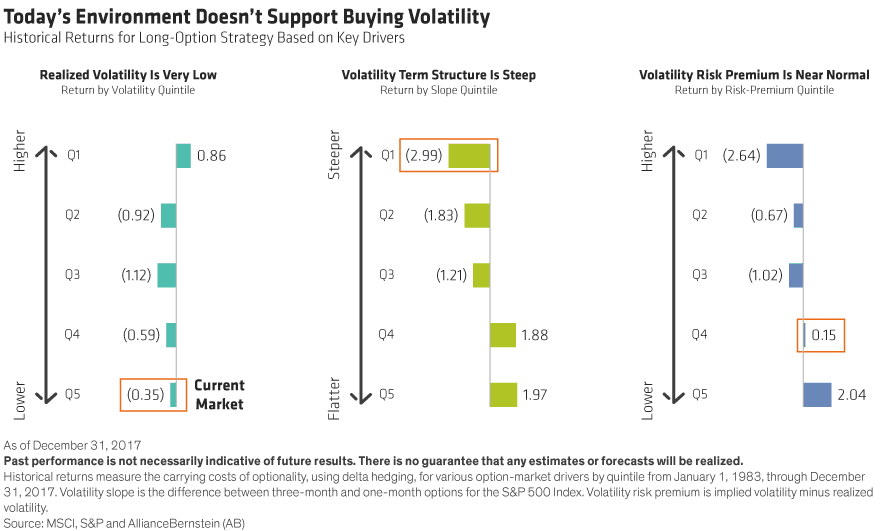Investors worried about an equity correction might see low volatility as a sign that buying options is a cheap way to protect a multi-asset portfolio. But the cost today is higher than it seems.
Implied volatility is indeed very low, with the VIX ranging from 10 to 12 lately. But there’s more to determining how cost-effective it is to “buy volatility” as downside protection. We look at three key components to make the determination.
First, realized volatility—the actual day-to-day variation in asset prices—is itself very low. This suggests that there’s less need to find protection against an increase in volatility. Second, longer-term options are more costly than normal versus shorter-term options, adding to the cost of carry for a long-option position. Third, the difference between implied and realized volatility—the volatility risk premium—is close to average, indicating a roughly neutral signal for the attractiveness of long-option positions.
When we take these three considerations together, a long-option strategy seems expensive today. We think it makes sense to consider other ways to protect against drawdowns and volatility. At the core are keeping your allocation flexible and using a broad array of signals to determine adjustments.
But other measures can help to keep balance in portfolio risk. These include overweighting currencies (like the US dollar and the yen) that tend to outperform when volatility rises and not abandoning duration.
The views expressed herein do not constitute research, investment advice or trade recommendations and do not necessarily represent the views of all AB portfolio-management teams.
Article by Alliance Bernsstein






